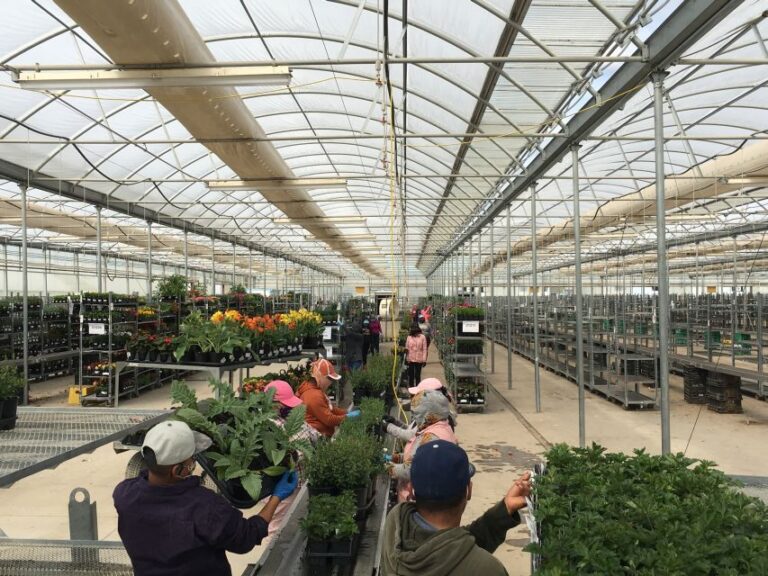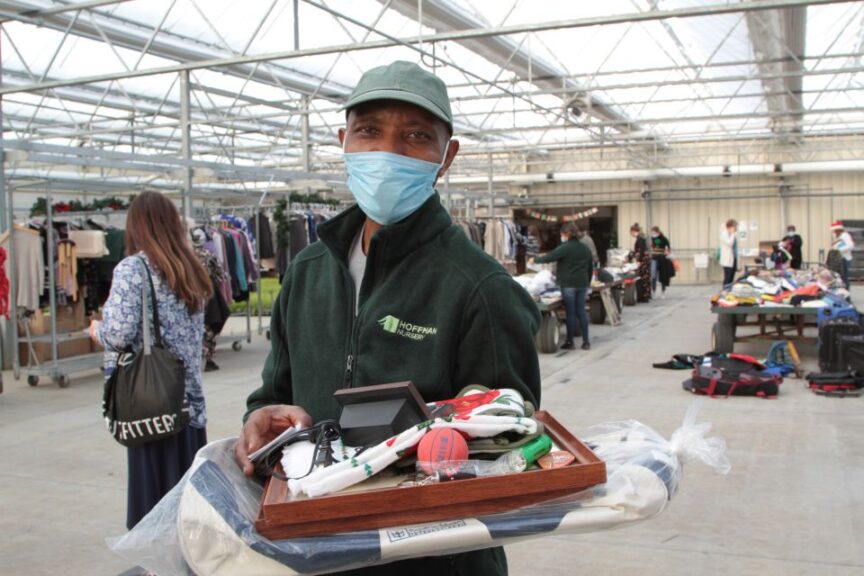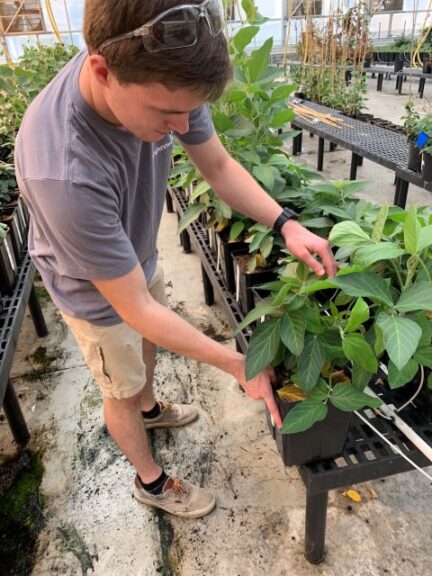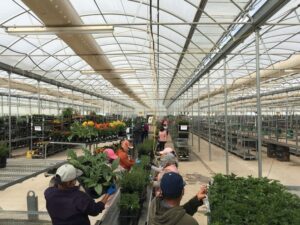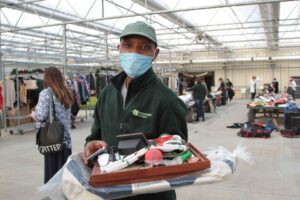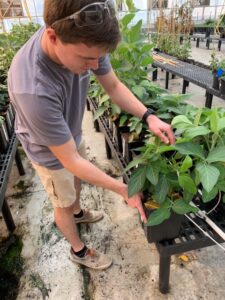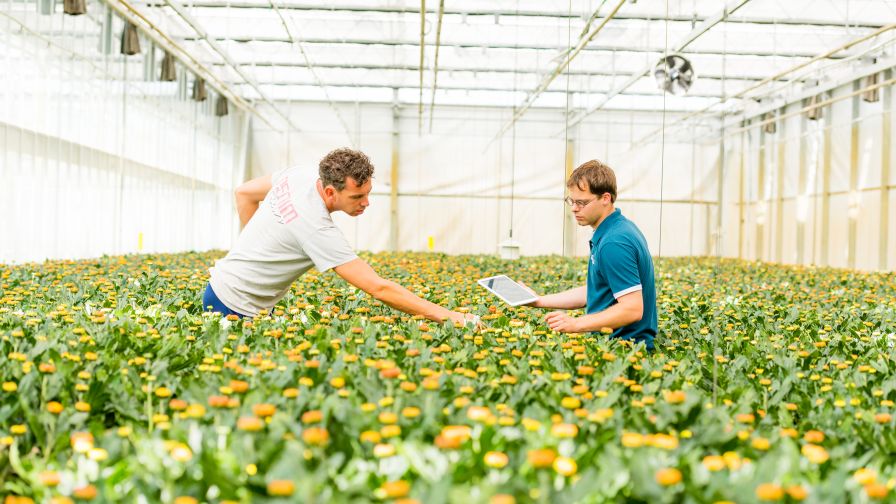Ways Growers Are Stepping Up to the Plate to Recruit Best Talent
Operating a successful greenhouse business is no easy feat. The tasks seem to be endless, and the plants always need careful attention. It is essential to care for them properly throughout their time at the greenhouse, from propagation to shipping day. They need the ideal amount of sun and shade; they need to be watered; there are pest control systems to implement; and machines must be kept in working order. All the cogs must work in sync.
For many growers, the key to success is their workforce. Greenhouses need qualified talent from the top down. The leadership from the CEO is just as important as a general laborer pulling plants to prepare for shipping. A sizeable workforce that is well-trained, hardworking, and knowledgeable about the product is a necessity. That said, growers across the country are feeling the pinch in their workforce. In 2018, the number of job openings surpassed the unemployment level, according to the U.S. Bureau of Labor Statistics. Many baby boomers are leaving the workforce, which leads to a gap in the job availability and number of people willing to take the jobs.
“The green industry in particular has suffered because we’re manual labor focused. It’s hard work,” says Neal Glatt, Managing Partner and Co-Founder of GrowTheBench.com. “It’s not ultra-profitable, so our ability to scale our wages has been difficult. All those forces combined has led to this, ‘Wow, we are definitely near the front of the chopping block when it comes to viable job opportunities in candidates’ minds.”
Todd Downing, Managing Partner of BEST Human Capital & Advisory Group, says there are four factors that candidates focus on when looking for a job. They want to hear about the company’s mission and how it gives back to the community. Candidates are looking for career progression and opportunities for professional development. They want benefits, such as flexible schedules, paid time off, and unique offerings like on-site childcare. Candidates are also seeking authentic leadership. Leaders must empower their teams to make decisions. Downing says the No. 1 reason why employees leave their jobs is micromanagement.
Greenhouse Grower spoke with several experts, consultants, and growers across the country to gather tips and tricks on recruitment.
Company Culture Attracts Candidates
Hoffman Nursery in Rougemont, NC, is known for its commitment to the community. Employees look forward to the annual Hoffman Market, says Senior Director of HR and Legal Martha Hamblin. Employees may bring in gently used items, such as clothes, books, dinnerware, appliances, and electronics. In December, all employees receive about $20 in “Hoffbucks,” which say, “In Grass We Trust,” to shop around the market while enjoying refreshments. The amount of spent Hoffbucks is tallied, then the nursery makes an equivalent donation to the local food bank. Any leftover market goods are donated to a local charity.
Employees at Hoffman Nursery also volunteer with Rise Against Hunger, an international organization that sends packages of food domestically and abroad to those in need. Hoffman’s employees, adept at packing and working quickly, volunteer to package meals for Rise Against Hunger. To date, the Hoffman employees have packed nearly 30,000 meals. There are other various teambuilding events, Hamblin says, such as pumpkin carving and costume contests, game days, tai chi, and shared meals to learn about other cultures.
“When I talk with candidates, they really like the idea of the Hoffman Market and Rise Against Hunger,” Hamblin says. “I do tell people about those, and a lot of our applicants ask, ‘What are you doing for the community?’ We’re proud of our team and what we do together.”
Care and Communication Go a Long Way
At Skagit Horticulture in Mount Vernon, WA, there is an open line of communication between management and workers. Human Resources Manager Rose Vogel says 98% of the employees are Latinx.
In 2017, Vogel placed a labor advertisement on a Mexican radio station broadcasting from California to Washington state. As she walked through the greenhouses, Vogel heard Skagit’s employees listening to the same station. The ad was so successful that Skagit has not hired any temporary workers since 2017, and the company does not use the H-2A program. The entire human resources department at Skagit is bilingual or trilingual, and management practices an open-door policy, Vogel says.
The team lives by five principles, known as The Skagit Hort Way. These principles note the importance of strategic focus, communication, performance, sustainability, and culture. The last one states that Skagit “will always do the right thing.” This is evident in a practice Skagit followed when a worker was injured.
“In Washington state, people can lose three days of work before you need to compensate them. But if someone’s making $14.49 an hour, three days of lost wages is a lot of money to that family,” Vogel says. “The state says you don’t have to keep them on salary (KOS) until three days. But the boss said, ‘When someone gets injured, I want to KOS immediately.’”
The leadership team at Skagit does not want an injured employee to suffer the financial impact of lost wages. It makes people feel anxious and feel like their employer does not care about them, Vogel says.
Ethan Jenkins, a recent AmericanHort HortScholar and a graduate student at North Carolina State University, says company culture is an important aspect of the job search for him. Over the summer, he worked as an intern at Pairwise, a gene editing start-up company in Durham, NC, for food crops.
For full-time employees, Pairwise offers unlimited paid time off. This benefit attracts Jenkins to Pairwise when he is looking for a full-time job, he says, because he wouldn’t have to stress out about taking a sick day. Pairwise also recognizes employees for their impressive work during company meetings.
“That’s a great way to keep company morale,” Jenkins says. There are a lot of little factors like that that make you feel you’re appreciated, and they value what you’re doing.”
How To Write a Quality Job Ad
GrowTheBench.com was created to provide affordable online education, professional development, and peer networking in the green industry. The website offers more than 400 training videos that cover topics such as recruiting, succession planning, technical skills, sales, and management.
Laura Kline, Director of Growing at The Plant Company in Stuarts Draft, VA, received 50 applicants in one day for a grower helper position after she rewrote the job description using advice from GrowTheBench.com. The original job description listed facts like duties, hours, and pay. She received one or two applicants per day. Kline rewrote the ad to make it sound friendly and show off the team’s personality. One of the tasks listed is “pull those pesky weeds out of pots when they pop up.” The description also lists The Plant Company’s motto, “Together We Grow Stronger.” Kline also mentioned the company culture in the posting, noting that The Plant Company has a “fun-loving team of awesome people who are dedicated to their craft.”
Read the full job description here.
Untapped Talent Pools
Glatt says there are several untapped talent pools for growers. The national unemployment rate is 3.8%, but the rate is five times higher for formerly incarcerated people. Growers should take advantage of this opportunity, Glatt says. However, some of these applicants may need more training in communication and financial literacy and may need assistance with transportation.
“We’re not working with any secure sites or data. Nobody really cares what our people look like,” Glatt says. “We can make exceptions individually for things like background checks and give someone the opportunity to make a living even if they made a poor choice in the past.”
Other untapped talent pools include immigrants, long-term unemployed people, and people with disabilities. Potential candidates can be found through partnering with other organizations, such as a center for people with disabilities, a workforce development group, a halfway house, a nonprofit addiction recovery program, and vocational schools.
Automated Tasks Aid in Recruitment
With a limited workforce, greenhouse operations must put their people in a position to succeed, according to Kris Nightengale, Vice President of Sales for AdeptAg. Employees should be able to enjoy their work and show advancement in their careers.
There are some tasks that people do not want to do, and automated systems can perform these tasks better, such as filling pots to a consistent soil density. Automated systems can complete tough, less desirable jobs, such as tasks that require being in the sun for extended periods of time or bending in an uncomfortable position. When these challenging tasks are automated, growing jobs look more attractive to candidates.
“That’s what automation, movement, and cultivation systems do,” Nightengale says. “They rely more on people’s brain than on their back and brawn.”
Soil mixing, seeding, and transplanting are often tasks that can be replaced by automated systems, in addition to watering with booms. The employees who were doing these tasks could work in a more fulfilling position with less manual labor and more opportunities for growth.
This is evident at Garden State Growers in Pittstown, NJ. Production Manager Mike Prol says automated systems from AgriNomix improved the quality of life for his workers. For example, without a transplanting machine, growers planted small packs by hand. They also labeled pots manually.
“We reduced our seasonal labor force but we held onto all of our year-round employees who have been here for a long time. Instead of them supervising the seasonal force as they completed mundane tasks, now they run the equipment,” Prol says. “The line leader that we had on our production line that stuck the cuttings, she was the supervisor of nine women sticking cuttings. Now she runs all ISO sticking robots.”
All the aforementioned topics are necessary to recruit and retain talent, says Mary Beth Cowardin, Vice President of Marketing and Member Engagement for AmericanHort.
Growers are making creative solutions, such as flexible work hours that allow parents to leave to pick up their children from school then return to work. Another business is offering rotating schedules, so growers do not always have to work on the weekends. Community involvement and volunteering can also be a deciding factor for applicants, she says.
“Trying to solve this workforce challenge is one that AmericanHort puts great priority on,” Cowardin says. “It’s a big focus for our team to advocate on behalf of the industry.”
Editor’s note: This is the first of a four-part series on labor solutions. The next article will come out in late October.






